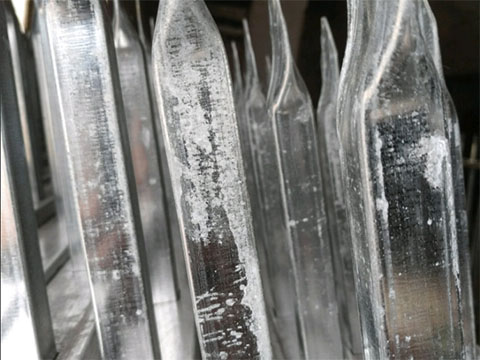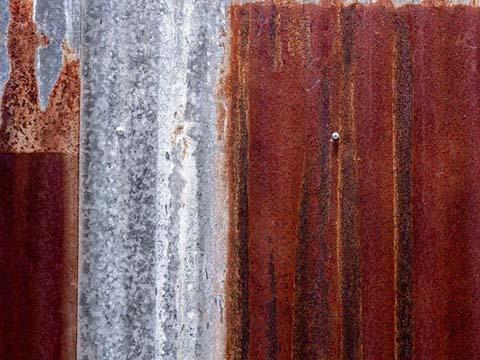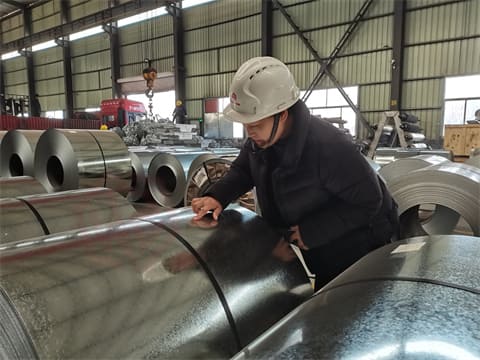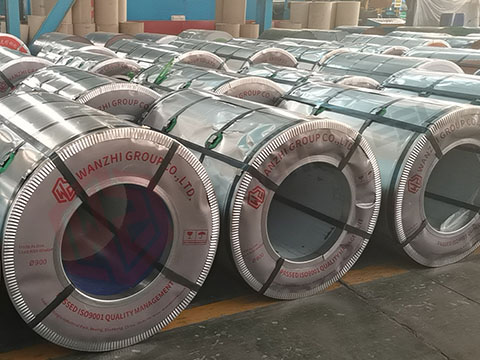10F, Building B, Erqi Center, Erqi District,
Zhengzhou City,
Henan Province, China
Wit:+86 15138685087
(WhatsApp/Wechat)

10F, Building B, Erqi Center, Erqi District,
Zhengzhou City,
Henan Province, China
Wit:+86 15138685087
(WhatsApp/Wechat)
Under normal circumstances, the galvanized steel is not evenly corroded. In fact, the galvanized layer is corroded first in the place where the coating and the substrate are poorly united, resulting in serious corrosion locally. And eventually, both the zinc layer and substrate are rusted. From this point of view, the adhesion of the zinc coating is more important than the thickness of the zinc coating. Therefore, it is critical to choose a reliable galvanized sheet manufacturer.
The corrosion of galvanized steel starts from the oxidation of the zinc layer, which will form a layer of a gray-white powdery substance. That is called “white rust“. Then white rust further reacts with impurity gases such as carbon dioxide in humid air to form black spots, which is the so-called “black rust”. Over time, the zinc layer is corroded little by little. When the zinc layer is exhausted, the base metal loses the zinc protective layer and begins to oxidize, resulting in “red rust”. Once “red rust” occurs, the corrosion will become very fast. Until the substrate is rusted, the galvanized steel will end its service life.

White Rust on Galvanized Steel

Red Rust
In addition, there are other two corrosion situations called blackening. After the galvanized sheet has been used for a period of time, under the influence of elements such as lead in the zinc layer, the dull part of the spangles will turn black. The blackened zinc layer still has a protective effect on the base metal, but it has a certain impact on the service life.
Galvanized sheets may suffer from blackening corrosion during transportation. Due to the small coiling tension, the steel coil layers are loose, and the parts of the galvanized coil contacting the wood pallets will rub against each other and cause oxidation. After the white oxide is rubbed off, black spots appear on the surface of the galvanized sheet. In this case, the passivation film will be damaged and the galvanized layer will be thinned. Except for surface defects, the life of the galvanized sheet will be greatly reduced.
The main purpose of galvanizing is to isolate the corrosive medium from the substrate. Therefore, the compactness, integrity, and good adhesion of the zinc coating will affect the corrosion resistance of the galvanized sheet.
GI is the most widely used in construction, home appliances, automobiles, and other industries. It is also used as a substrate for color-coated sheets. While there are also other coatings with better corrosion resistance, such as GL, ZAM, which can be used in heavily corrosive environments and marine climates.

Hot-dipped Galvanized Coil

Packaging Detail
Here we have learned the rusting process of galvanized steel and the influencing factors. As we know, galvanized steel has excellent corrosion resistance in dry environments or pollution-free environments. However, its service life will be greatly shortened in a corrosive environment. Therefore, it is important to properly transport and store galvanized steel. Also, it is crucial to choose the suitable material according to the use environment and use purposes. Welcome to contact us for more details!





